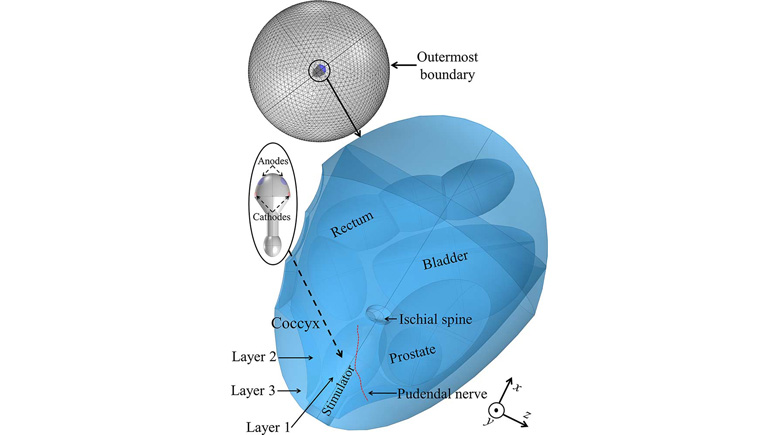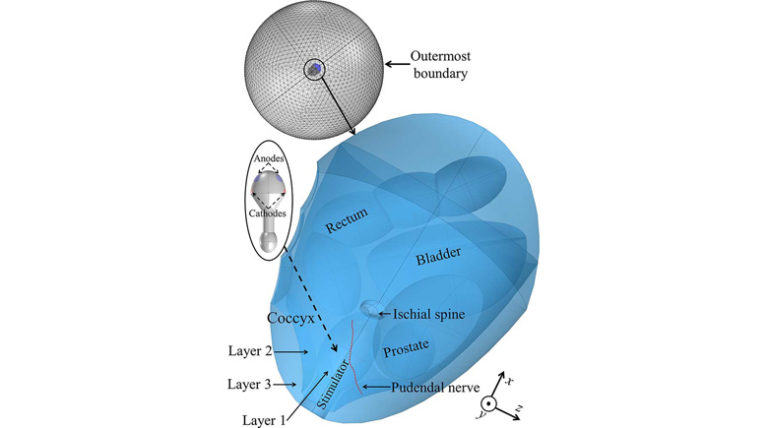
After spinal cord injury, functions of the lower urinary tract may be disrupted. A wearable device with surface electrodes which can effectively control the bladder functions would be highly beneficial to the patients. A trans-rectal pudendal nerve stimulator may provide such a solution. However, the major limiting factor in such a stimulator is the high level of current it requires to recruit the nerve fibers. Also, the variability of the trajectory of the nerve in different individuals should be considered. Using computational models and an approximate trajectory of the nerve derived from an MRI study, it is demonstrated in this paper that it may be possible to considerably reduce the required current levels for trans-rectal stimulation of the pudendal nerve compared to the values previously reported in the literature. This was corroborated by considering an ensemble of possible and probable variations of the trajectory. The outcome of this study suggests that trans-rectal stimulation of the pudendal nerve is a plausible long term solution for treating lower urinary tract dysfunctions after spinal cord injury.

